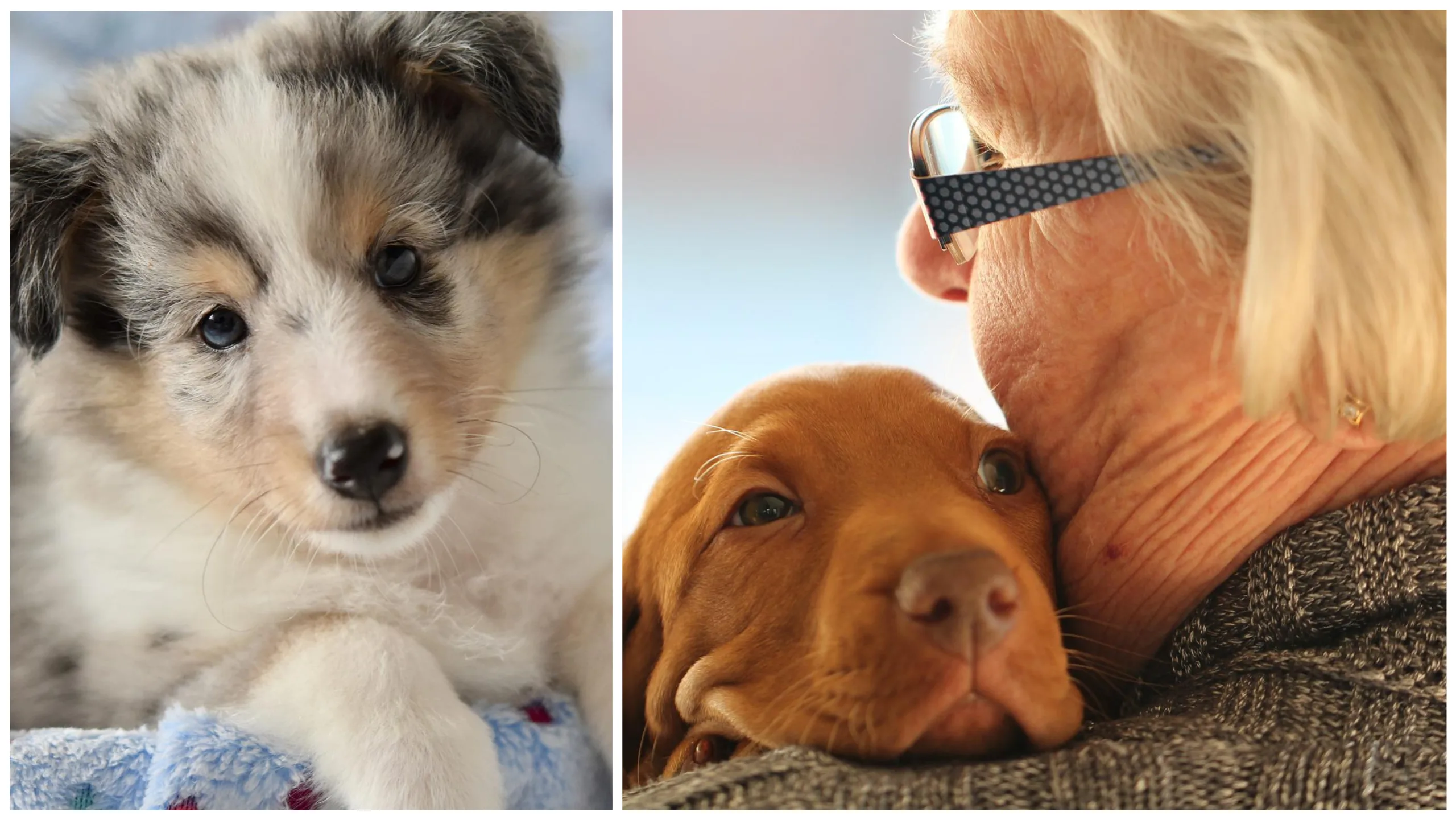Are you looking for a dog that will also be your best friend and partner in crime? A pup that is always next to you, and keeps you company while going on hikes, taking walks at the park, or just chilling on your couch? You probably know that not all dog breeds were cut to fulfill that role. Some dogs are more independent than others, and if you are one of those people who wants a clingy pet, we would suggest looking into ‘velcro dog breeds’.
Velcro dog breeds refer to a canine companion who sticks to you like a velcro roller. You know how hard it is to get these things out of your hair. Well, it’s equally as hard to get some alone time from your velcro dogs. So if you don’t tolerate clingy behavior, these pooches definitely aren’t a good choice for you. But if you enjoy having zero privacy, you just found the right article!
In this article, we will take a closer look at different kinds of clingy pups and we will try to decide what the ultimate velcro dog for you and your family members is. So let’s start with our list of the clingiest, most loyal, velcro breeds out there, shall we?
Shetland Sheepdog
At least from the outside, the Shetland Sheepdog looks like a small version of the Rough Collie. Their coat is long, straight, and hard, with a thick mane and frill and soft feathers on the legs and tail. And even though you might not expect it, these dogs are clingy like no other.
Shelties are sensitive, gentle, and have a strong sense of loyalty. The breed has a wide range of personalities, from excited and rowdy to calm and submissive to shy and quiet.
Most Shelties have a calm and friendly personality. They are kind to everyone and gentle with other animals, but they are usually shy and cautious around strangers. If you start socializing your dog on time, this personality trait shouldn’t be too evident.
The Shetland Sheepdog might be a better choice for a family with older kids or no kids at all. Even though their busy, active minds and ability to learn quickly are good in some ways, it can be easy for them to get too much stimulation and learn the wrong things, especially when they are around very young children.
The Sheltie looks like a show dog, and these days, a lot of them are. But underneath the shiny coat is a strong, athletic, smart, and energetic working breed. They will do great with people who live in the country and are looking for a stunning dog that stays by their side.
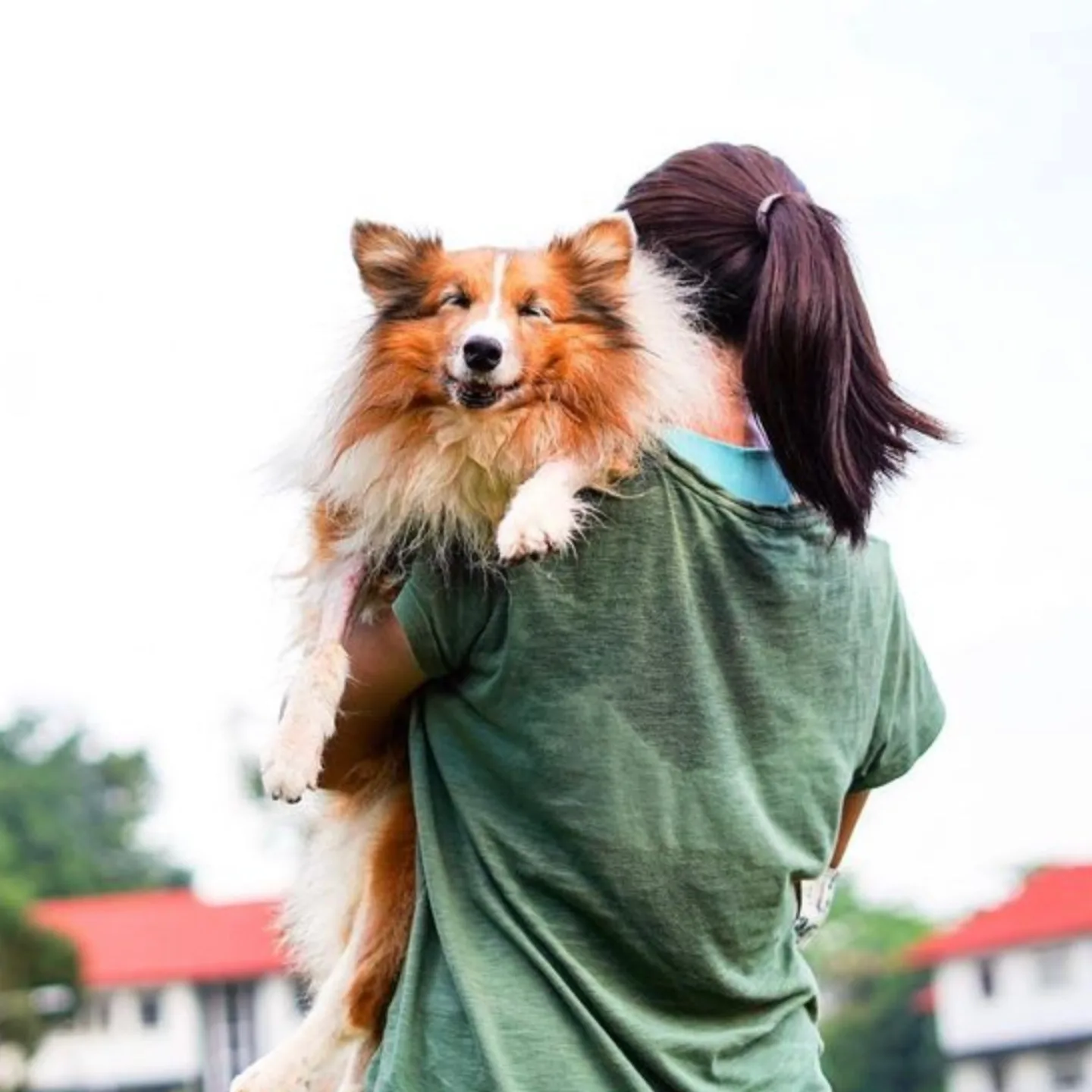
Source: Instagram (@pawsintimesg)
Vizsla
The Vizsla is a talented medium-sized hunting dog that comes from Hungary. This is a loyal and loving furry friend that will stay by your side for a long time. This breed is also very flexible when it comes to doing new tasks and learning new skills.
Vizslas do best in homes where they can spend time with their owners, whom they love. Because they are friendly, they get along well with kids. They will enjoy playing with kids of all ages, but you should watch how they get along with your younger kids. The Vizsla can be a very active and excited dog that can knock over small children.
This Hungarian breed has a strong hunting instinct that makes it hard for them to live with smaller animals like hamsters, birds, and reptiles. Since they are hunting dogs, the drive to hunt will always be there.
Vizslas need more company than most other breeds and don’t like being alone for more than a few hours. They’re called “Velcro Vizslas” because they stick to their owners so well. So, they don’t do too well when they are on their own. They usually show how unhappy they are by chewing and barking, and even peeing around your house.
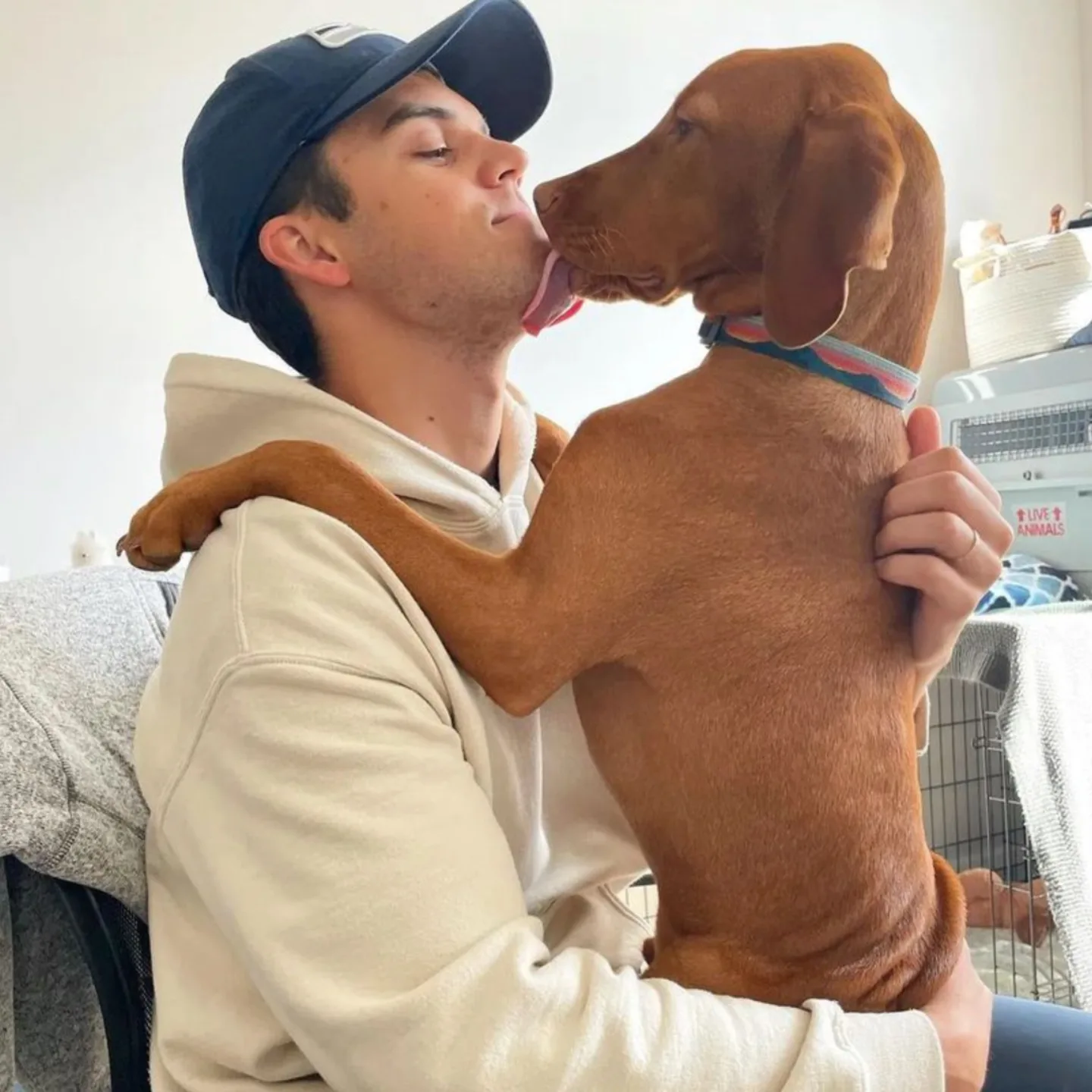
Source: Instagram (@vizlasclubs)
Keeshound
Keeshonds love people and want to take part in everything the family does. They do best in homes where they are expected to do so. They are active, friendly, and smart, which has made them Holland’s most popular dogs.
The Keeshond is an old breed that has been a family pet and guard dog for a long time. In Holland in the 17th and 18th centuries, many Keeshonden lived on barges and farms. They were often seen on Dutch ships, where they worked as guard dogs and were loyal to their owners.
A Keeshond is is active, alert, and friendly. He likes to spread his happiness by spinning in circles when he’s happy or excited. Everyone likes him because he is fun to be around and cares about both adults and children. Socializing your Keeshond puppy is important for him or her to become a well-rounded dog.
Keeshonds are great for people who spend a lot of time at home with their families. If left alone for too long, they have been known to bark all the time or even do damage. There’s a reason they’re called “velcro dogs.”
Keeshonds are smart and easy to train, which makes them a good choice for people who have never owned a dog before. Because the Keeshond was made to live on small boats, it can adjust to a wide range of environments, from a small apartment to a big house. This is a huge plus if you only have a small space and a bigger breed would be too much for you.
https://youtu.be/vR5-S7Ww5KE
Weimaraner
Today, people usually call Weimaraners Weims, Silver Ghosts, or Gray Ghosts. Their smooth mouse-gray to silver-gray fur and pale amber, blue-gray, or gray eyes are part of their appeal. But the Weimaraner isn’t just about how he looks. These aristocratic dogs are friendly and loyal.
Weimaraners are loving dogs that need to be around their owners all the time, as they are prone to separation anxiety, which can be a bit too much for some people. But if you like having a dog with you all the time and have a lot of time to go hiking, jogging, or hunting, the Weimaraner can be a great pet.
The Weimaraner is first and foremost a house dog. He doesn’t belong in a kennel or in the backyard, but he also doesn’t belong in an apartment. This active dog needs a large yard with a secure fence to run in and a busy family to give him the exercise and mental stimulation he needs.
It also helps to have a sense of humor, especially when you see how your Weim has changed your yard’s landscaping to get rid of mice, moles, and bugs. He’ll be proud of his work, so don’t forget to tell him how great it looks while you figure out how much time, money, and work it will take to get the yard back to how it was.
Labrador Retriever
Labrador Retrievers are known for being friendly and attached to their owners. They’ll go anywhere with you until “death do you part,” and even then, we’re sure they’ll wait for you in Heaven. If you give your dog a lot of time to run, cuddle and play, they will love you forever. The bond you will form with a Lab is unlike anything else you ever experienced before.
This dog has been the most popular dog in America according to the AKC for many years in a row, and it loves to be spoiled. Labradors may be too big to be lap dogs, but you can’t tell them that because they’ll try to sit in your lap every chance they get. They are great therapy and service dogs because they pay close attention to their owners.
In addition to being friendly, they are smart and eager to please, which makes them easy to train. This breed needs to be trained because it has a lot of energy and enthusiasm. Because they have always worked, the Lab is busy. To be happy, this breed needs both physical and mental activity.
Labrador Retrievers not only like kids, but they also like the noise they make. They are happy to go to a child’s birthday party and will even put on a party hat. But, like all dogs, they need to be taught how to behave around kids, and kids need to learn how to behave around the dog.
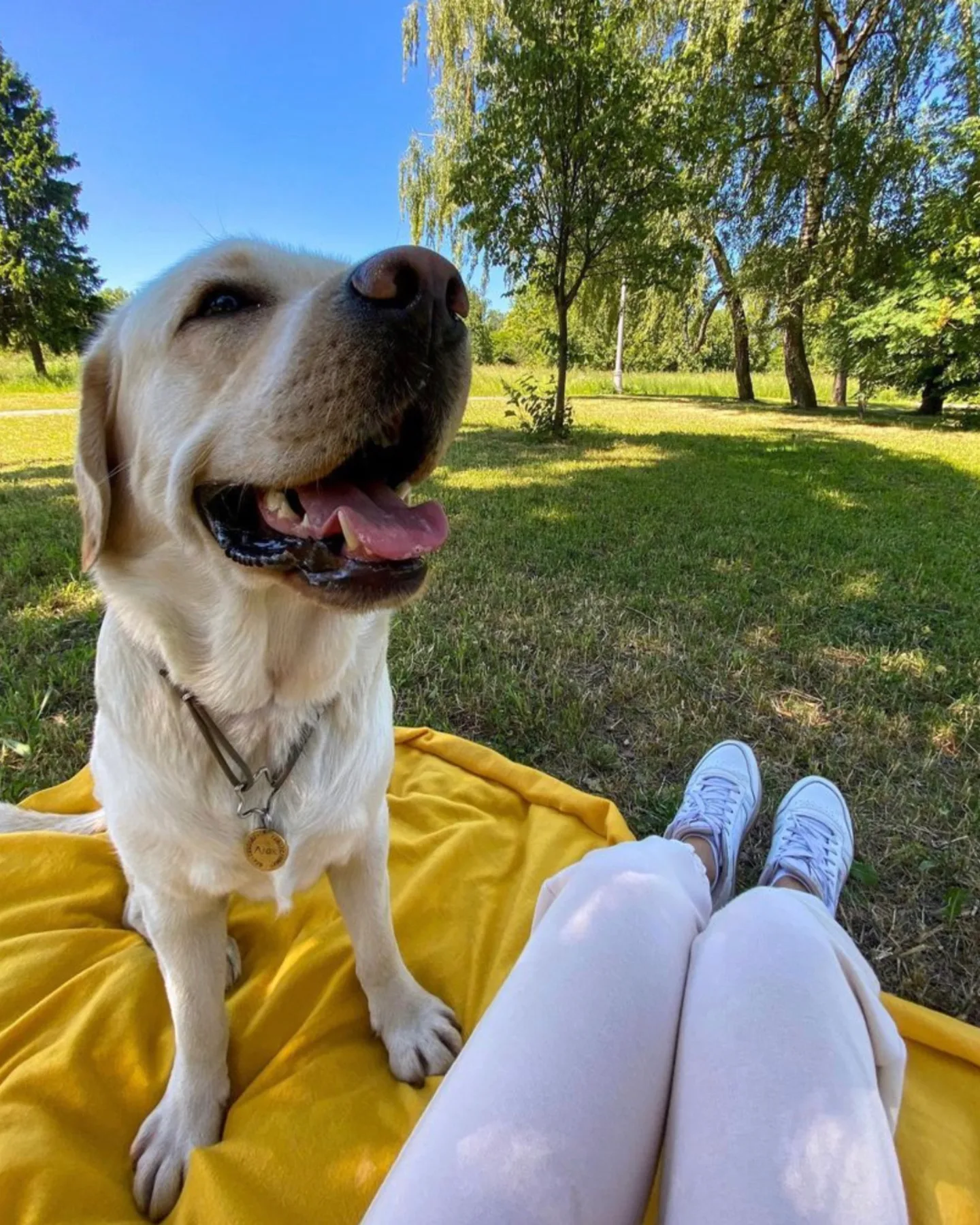
Source: Instagram (@labrador.chik)
German Shepherd
German Shepherds have a reputation for being “velcro” dogs, which means they never leave their owner’s side. They are the kind of breed that almost always wants to be with people more than anything else, and unless they have been mistreated or taught to be aggressive, they will almost always give you a wet kiss on the face when they see you.
German Shepherds are so clingy because they are loyal and protective, and it’s in their nature to follow you around. They can also have trouble with separation anxiety. Owners can be at fault if they are always petting, cuddling, and kissing their dog, which makes the dog even more clingy.
German Shepherds make great pets for children if they are well-trained and have spent a lot of time with kids, especially as puppies. Some people even say that they are like a mix of a babysitter and a police officer because they are kind to and watch out for the kids in their home.
These dogs are much more than just pets. They have become heroes and police dogs that can’t be beaten. German Shepherds were used as search and rescue dogs after the 9/11 terrorist attacks. They went through the wreckage of the World Trade Center looking for survivors and cried with the families of those who were saved.
German Shepherds are known for being brave, loyal, and protective. If you have the time to care for them, they make a great first dog. They are also very smart and easy to train, which is why they are often kept as pets and used as working dogs.
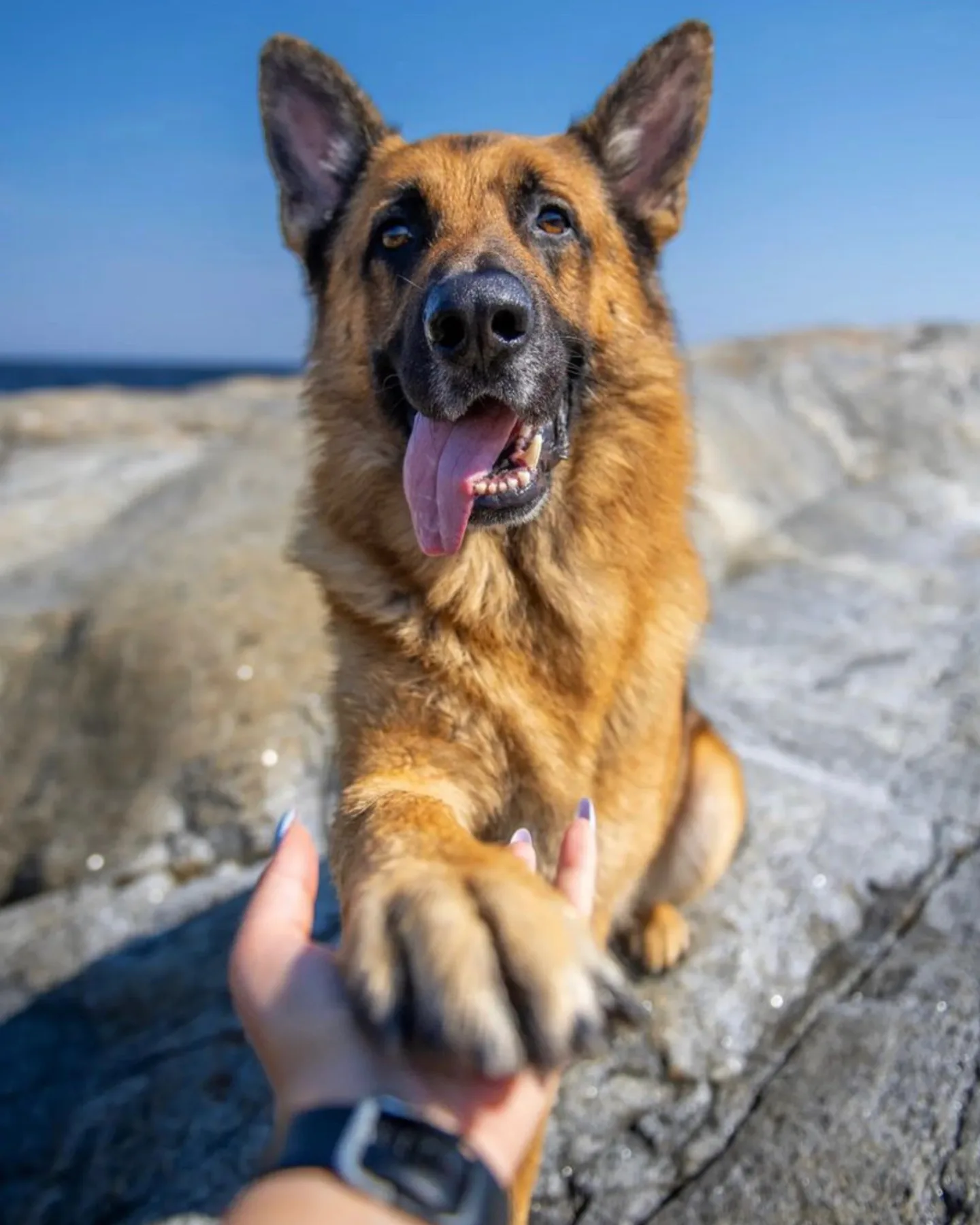
Source: Instagram (@kurt.the.gsd)
Australian Shepherd
In spite of its name, this breed was created in the United States. Australian Shepherds were originally bred to help ranchers and farmers in the western U.S. herd their animals, and some of them still do this today. But he can also be a great family pet for people who love to be active and have enough time to give to their canines.
The Aussie does best in a home where he can use his intelligence and energy. He is clever, hardworking, and versatile. He needs a lot of exercise because he has a lot of extra energy. A walk around the neighborhood won’t do, and he needs at least a small yard to help him blow off his steam.
His history as a working dog has made him a loyal friend who can watch over his home and family while keeping a safe distance from strangers. He likes kids, but until you teach him not to, he’ll probably try to “herd” them. He loves to stick to his owners and he will follow you around no matter what you do around the house.
With the Aussie, every day is a new adventure. He will work and play from morning until night, and his hard work and kindness will win your heart. This breed is very flexible and makes a great family pet and working dog, but only if everyone in the house is as active as he is.
Boston Terrier
Because they look like they are wearing a tuxedo, the Boston Terrier is also called an “American gentleman.” Their name comes from the fact that they came from Boston, Massachusetts.
People say that Boston Terriers are very smart, active, and loving. Even so, they can be very stubborn and overactive at times, and they often act silly.
They love spending time with their owners and are very loyal. But they tend to be shy around strangers, so it’s important to get them used to people early on. Most of the time, they are quiet, gentle dogs that don’t bark or act mean. They also get along very well with other pets.
In spite of this, the Boston Terrier is a great pet for a family because it is small, active, and friendly. They love kids, but people of all ages will get along well with them. Honestly, they are a good choice for people who live in apartments or are older.
The Boston Terrier is a simple dog that doesn’t need much exercise. This doesn’t mean, though, that they don’t need any exercise at all. You have to walk them several times a day, but the walks don’t have to be long.
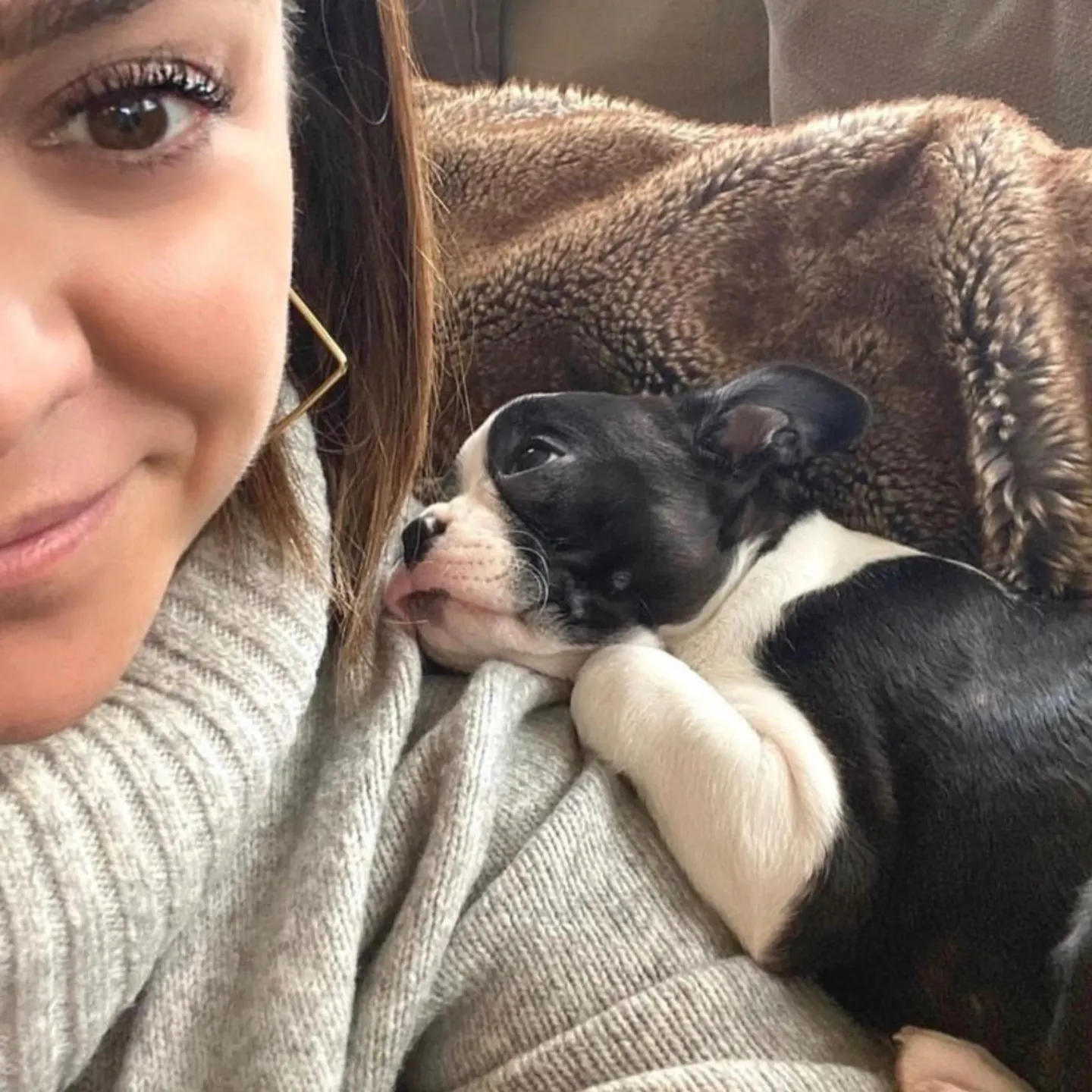
Source: Instagram (@bostonterrierloversig)
Golden Retriever
The Golden Retriever is very different from other dogs. When we hear the word “Golden Retriever,” we all think of dogs with happy faces, lots of energy, and who are always up for an adventure. We think of Golden Retrievers as being kind, loving, and wanting to be cuddled a lot.
Goldens are friendly, loving, and loyal, and they make great family pets in general. They are friendly dogs that like to be around people. We call them “Velcro dogs” because they like to be near their owners as much as possible. Most of the time, they are next to you, on top of you, or at your feet.
Goldens take a long time to grow up, so they will act like puppies for two to three years. So, if you don’t want your shoes chewed, your house rearranged, or your baseboards are eaten, you might want to get an older dog instead of a puppy.
Because they were raised to work with people, they want to do their best for their owners. Golden Retrievers like having a job to do, like bringing the paper or getting the kids up. Golden retrievers are very open about how they feel. You can almost always tell what a Golden is thinking by their eyebrows, sighs, grunts, and smiles.
When you go out with your Golden, people usually notice how happy and friendly they are. Goldens don’t bite people or other dogs, and they get along well with both. Goldens seem to have a lot of compassion and love for everyone.
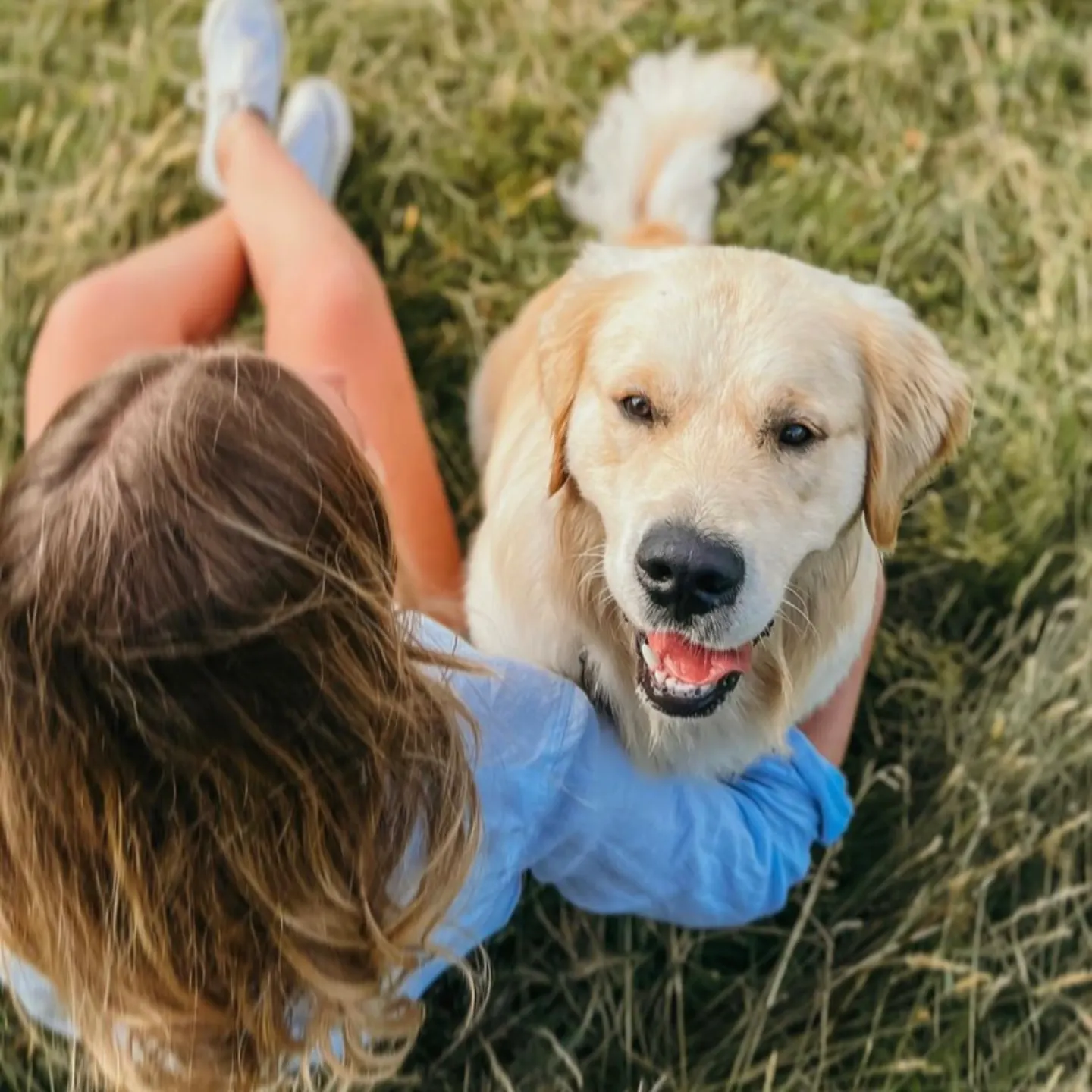
Source: Instagram (@atlaslegolden)
Pugs
Pugs love their people and want to be with them all the time. On your lap, in your bed, or even at your feet while you use the bathroom. There’s a reason they’re called “velcro Pugs.” Pugs are also funny, cute, and love to have fun,
One thing is for sure: Once you go Pug, you will never go back. These funny creatures will make your days full of laughter and happiness. They love people no matter what, and they are great family dogs. They are the perfect pet because they are small, friendly, and have great personalities.
You might think they aren’t very smart because of how silly they are, but you’d be wrong. In reality, they are very smart and clever dogs that don’t always get the credit they deserve for being intelligent.
Sadly, Pugs can also get sick in a number of different ways. Their big eyes are prone to corneal ulcers or dry eyes, and their squished faces can make it hard for them to breathe. Their wrinkles also need to be cleaned to avoid skin infections. General checkups at the vet are a must, as is regular grooming.
They don’t do well in hot or humid weather, like all flat-faced breeds. They do best when the weather is neither too hot nor too cold. Make sure that your Pug always has a comfortable place to stay and doesn’t spend too much time outside during those hot summer days.
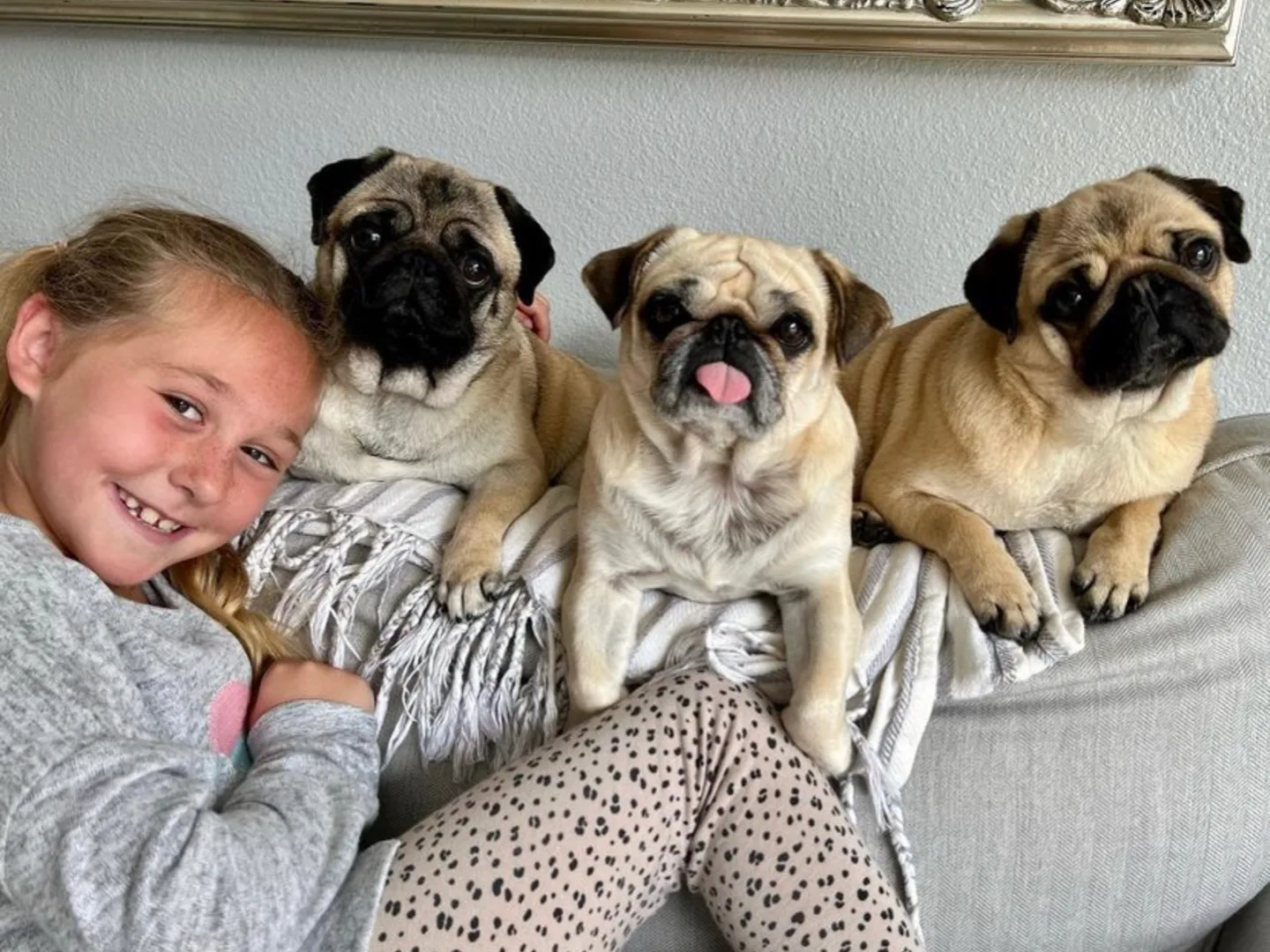
Source: Instagram (@circus_pugs)
Irish Wolfhound
The Irish Wolfhound is the tallest of all sighthounds. He looks like a Greyhound with a rough coat, but it is bigger and stronger. The Irish Wolfhound was able to catch and kill his prey because he was very fast, strong, and big.
The puppies of the Irish Wolfhound are smart and sensitive. They need a lot of socializing. When it comes to his family, he is calm, polite, and watchful. When he is being trained, he needs positive reinforcement like praise and treats to help him get the hang of it.
Even though he is big, the Irish Wolfhound is a house dog. He likes being around other people and doesn’t mind being inside. He would be better off in a house without stairs because they hurt his joints. They don’t have that much energy, and they don’t need to run around for that long. So, he doesn’t really need a lot of exercise.
Like any other dog, not everyone will fit with an Irish Wolfhound. Even just his huge size is something to think about. He has a few health problems that anyone who wants to buy him needs to know about. And his breed is one that only lives for 6 to 8 years. If you want a breed that lives for a long time and is easy to take care of, he’s not it. But if you want a friend who will fill your life with love, respect, and sloppy kisses, you don’t need to look any further.
https://youtu.be/9iBiNZZvA7s
Conclusion: Which Velcro dog breed is right for you?
Now that you have learned how many different velcro dog breeds there are out there, you might be wondering: Which one is right for me? Well, that will depend on what size, activity level, and overall temperament you are looking for. Are you an active person living in the country? Then the Shetland Sheepdog may be a great fit. Are you a city apartment dweller that loves to laugh? Then definitely get a Pug.
However, one major problem is that all of these dog breeds are prone to separation anxiety. That’s why you shouldn’t even think about getting a velcro dog breed unless you are able to spend enough time at home. Their clingy behavior requires a pet parent that isn’t away for long periods of time. You don’t have to be with them the whole day, but if you are gone most of the time, these dogs will suffer.
That’s why it’s important to be honest with ourselves when getting a new dog. How much can you offer? Is there anyone to help you to take care of your extra clingy dog? We ask all of these questions for good reason because it seems as if humans these days don’t realize how much of a responsibility it is to own a canine.

